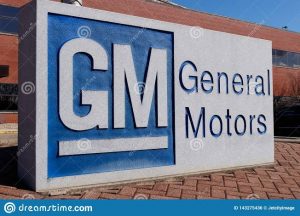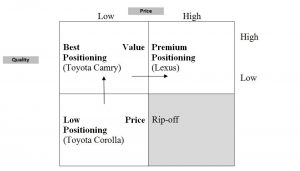 Frts. Gautam Mohanty* in Bhubaneswar, August 5, 2021: Like several of the other self-destructive habits, arrogance can arise from exceptional achievement. One situation specially productive of arrogance is when a company, through unexpected or stunning accomplishment catapults to the position of industry leader and then goes on to successfully defend itself against wave after wave of competitive, regulatory, and even public opinion assault.
Frts. Gautam Mohanty* in Bhubaneswar, August 5, 2021: Like several of the other self-destructive habits, arrogance can arise from exceptional achievement. One situation specially productive of arrogance is when a company, through unexpected or stunning accomplishment catapults to the position of industry leader and then goes on to successfully defend itself against wave after wave of competitive, regulatory, and even public opinion assault.
Quite naturally, such a company comes to believe it is immune to external forces – a belief bolstered by the media and its stakeholders (suppliers, dealers, and so on) – and its reputation is blown out of proportion. To me this is the real meaning of “good or great”.
The company doesn’t change, but its accomplishments are exaggerated by a media overly fond of big words and big stories. Gradually, the arrogance-prone company comes to believe its own press clippings. Then we have the familiar story: Success courts its own demise. For a particularly good illustration, let’s look again at…
GENERAL MOTORS
It was under Alfred P. Sloan, who run GM as president and then chairman for 33 years, that GM rose to the apex of American business – and developed its culture of supreme arrogance. And, why not? The company overwhelmed the competition, controlled its labor force, lobbied lawmakers, and won the hearts of consumers – and by the early 1930s was firmly entrenched as the world’s leading carmaker. By 1941, its share of the U.S. market was more than 40 percent and growing, compared with just 12 percent 20 years later.
As for defeating the competition, Sloan’s greatest – and most ruthless – victory was over Ford, not over the foreign manufacturers did it hold at bay. Sloan paved the way for GM’s hegemony- and for the American car culture more generally, by first utterly destroying the domestic streetcar industry.
 In the early 1920s only 10 percent of the population owned an automobile, and Sloan saw very clearly where his real competition lay. While he was buying up and dismantling streetcar lines, he also orchestrated a massive campaign to convince American consumers that the automobile was the form of transportation they really wanted. It was truly an arrogance-inspiring performance.
In the early 1920s only 10 percent of the population owned an automobile, and Sloan saw very clearly where his real competition lay. While he was buying up and dismantling streetcar lines, he also orchestrated a massive campaign to convince American consumers that the automobile was the form of transportation they really wanted. It was truly an arrogance-inspiring performance.
GM’s attitude toward its own lower-echelon came to light in 1937, when assembly-line employees staged violent sit-down strikes that stalled production in Flint. Sloan wanted the governor to send in troops, but the governor demanded negotiation instead. Eventually, in 1940, a permanent agreement allowed GM workers to join the United Auto Workers, but relations between GM and its workforce remained acrimonious.
According to Irving Bluestone, who directed UAW’s GM department from 1970 to 1980, the syndrome at GM was not unusual for big companies during that time that management was there to make the decisions, and workers were there to obey the decisions, “The arrogance was typical,” said Bluestone, “and very deeply resented.”
Perhaps the final – and fatal – measure of GM’s arrogance came in response to the “Japanese invasion” in the 1970s and 1980s. As consumer tastes seemed to change and as American families wanted a second car for the commute to work, GM could have tried to manufacture smaller cars that would truly compete. Instead, it made the strategic blunder of allowing its own dealers – Pontic, Buick, and Olds – to carry Honda, Toyota and Nissan.
Previously, European automakers had been niche players. Even Volkswagen never gained more than 2.5 percent of the market. Why? Because of the prohibitive expense of setting up a distribution pipeline. But GM was so little concerned with the Japanese threat that it essentially gave away this tremendous competitive asset. “Who cares?”said GM. “Americans won’t go for these boxy little Toyota Corollas and Datsun 210s.” In effect, GM helped create the monster that would come back to terrorize it.
The rise of Toyota is just one of many examples of how the most dangerous competition comes from low-quality/low-price competitors. Utilizing price as their most tantalizing selling point, they establish a presence in the marketplace. Their upstream competitors generally malign them as easily dismissed peddlers of “junk” or just ignore them.
But if these “inferior” competitors improve quality while maintaining their relative cost advantage, they become irresistible value proposition to customers. Once they have elbowed their way into the value box, they are poised to further extend their reach into the top of the market by developing highly innovative or luxury products.
For example, Honda, which was known more for its motorcycles than its cars, entered the U.S. market with the diminutive and, by U.S. standards, quirkily engineered Civic. Even its low-expectations slogan, “It will get you where you’re going,” appeared questionable to most American consumers.
But the car quickly improved and established a solid home in the lower end of the market. Building on the Civic’s success, Honda introduced the Accord, which became the wildly successful standard for value. From there, the company moved into the luxury market under the brand name Acura. Similarly, Toyota started with the Corolla, moved up to the Camry, and then took on the U.S. luxury car market with the successful entry of Lexus.

Figure Explains: The move from the low end to the high end of the market.
This story is repeated again and again, whether the industry is automobiles, marble and granite, leather goods, textiles, steel, semiconductors, or consumer electronics. The Korean companies Samsung and Hyundai are some of the most recent examples, and we are now beginning to hear the rumblings of multinationals in the making from emerging economies such as China, India, Brazil, Eastern Europe, and Russia.
* Founder of B-School Forum


Leave a Reply
Be the First to Comment!